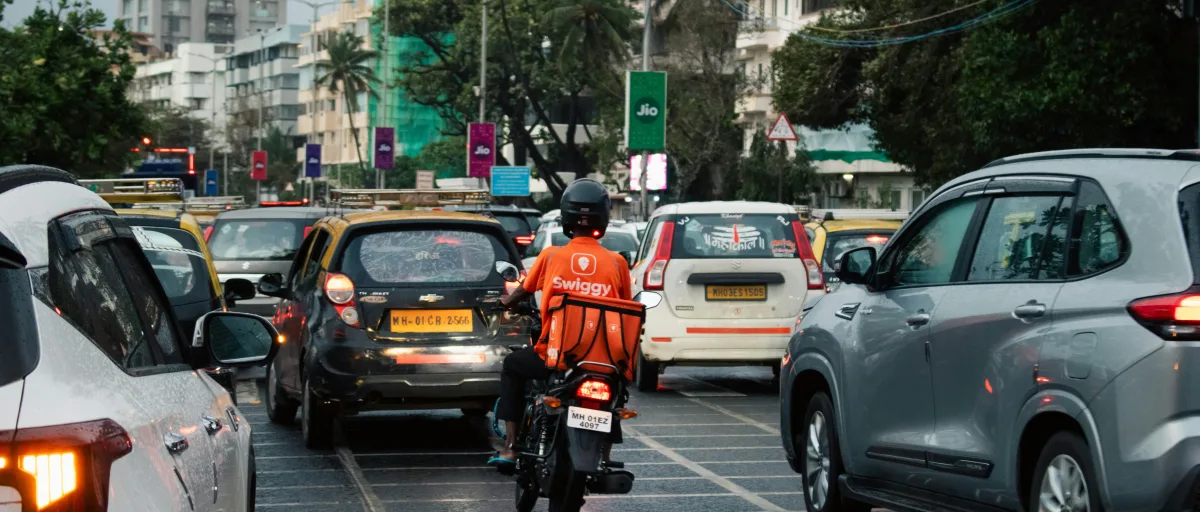Food delivery giant Swiggy has once again hiked its platform fee, raising it from ₹12 to ₹14 per order. The increase comes just ahead of India’s festive season, when food delivery demand traditionally spikes. The change has already been rolled out across major cities, making it the second time this year that the company has raised its platform fee.
Table of Contents
What is the Platform Fee?
Swiggy introduced the platform fee in April 2023 at ₹2 per order, charging all users regardless of cart value. The company described it as a nominal charge to help support platform operations, improve customer experience, and cover rising costs. Over time, the fee has steadily increased:
- April 2023: ₹2
- August 2023: ₹5–₹10 (depending on city)
- Early 2024: ₹12
- August 2025: ₹14
This latest revision means that Swiggy’s platform fee has jumped seven times in less than 18 months.
Why the Hike Now?
Industry insiders suggest two reasons behind the move:
- Festive Season Demand Surge – The months of August to December are peak business for food delivery companies due to Raksha Bandhan, Ganesh Chaturthi, Diwali, and year-end celebrations. Higher demand allows platforms to adjust pricing without significantly impacting order volume.
- Profitability Push – Swiggy has been under increasing pressure to improve profitability and prepare for its upcoming IPO, expected in 2026. By marginally raising per-order fees, the company can generate additional revenue without introducing new charges.
A Bengaluru-based food-tech analyst told NextWhatBusiness.com, “The platform fee, though small per order, adds up to massive numbers given Swiggy’s scale. Even a ₹2 increase can contribute hundreds of crores annually.”
Consumer Reactions
The fee hike has triggered mixed responses among Swiggy users. While some say it is a minor increase, others feel that combined with delivery charges, GST, and restaurant packaging fees, the final bill has become noticeably higher.
On social media, several users highlighted that an average Swiggy order worth ₹300–₹350 can now include ₹60–₹80 in extra charges, making home delivery less attractive compared to dining out or direct takeaway.
A Mumbai-based user tweeted: “₹14 platform fee + ₹35 delivery + GST… my ₹250 biryani now costs nearly ₹320. At this point, it’s cheaper to walk to the restaurant.”
Swiggy’s Defence
Swiggy has maintained that the platform fee is essential for sustaining operations and ensuring consistent quality. In its communications, the company has positioned the charge as a “small contribution” that supports technology, logistics, and customer experience.
The company has not issued a public statement regarding the latest ₹14 revision, but sources suggest that users on Swiggy One (its subscription plan) continue to receive free or discounted deliveries. However, even Swiggy One members are not exempt from paying the platform fee.
Competitor Landscape
Rival Zomato has also introduced similar charges. In January 2024, Zomato increased its platform fee to ₹4 per order, and analysts believe further hikes are likely in the coming months.
However, Zomato’s fee remains significantly lower than Swiggy’s, which may give it a short-term competitive edge in attracting price-sensitive customers. At the same time, both companies are facing the challenge of balancing customer affordability with profitability.
A Gurgaon-based investor noted, “Both Swiggy and Zomato know that price elasticity in food delivery is limited. Consumers will complain but won’t stop ordering altogether, especially in metro cities. That’s why these platform fees are here to stay.”
Bigger Picture: Food Delivery Economics
The economics of food delivery in India have long been under scrutiny. With high discounts, rising fuel prices, and logistics costs, profitability has been a challenge for both Swiggy and Zomato.
Swiggy, backed by SoftBank, Prosus, and other global investors, has been aiming to cut losses before going public. Its Instamart grocery vertical has already shown growth, but food delivery remains its core business.
Industry reports estimate that Swiggy currently handles 1.5–1.8 million orders per day. With a ₹14 platform fee, the company could be earning ₹20–25 crore daily just from this charge, translating to ₹7,000–9,000 crore annually if demand holds steady.
What It Means for Restaurants
While restaurants do not directly benefit from the platform fee, the hike may impact customer ordering frequency. Some restaurant partners have expressed concerns that higher all-inclusive pricing might discourage smaller, frequent orders, which are a big part of delivery revenue.
On the flip side, restaurants also acknowledge that Swiggy’s platform provides them with high visibility and access to a wide customer base, making the trade-off worthwhile.
Looking Ahead
The timing of this hike—right before India’s busiest dining season—suggests Swiggy is testing how far it can stretch without major order volume declines. The results of this move may also influence Zomato’s next pricing strategy.
For now, customers will have little choice but to absorb the increase, especially during festivals when dining out becomes harder due to crowded restaurants and traffic.
As Swiggy gears up for its IPO journey, platform fees are expected to remain a permanent fixture, with further adjustments likely depending on demand, inflation, and competitive pressures.
Discover more from NEXTWHATBUSINESS
Subscribe to get the latest posts sent to your email.



